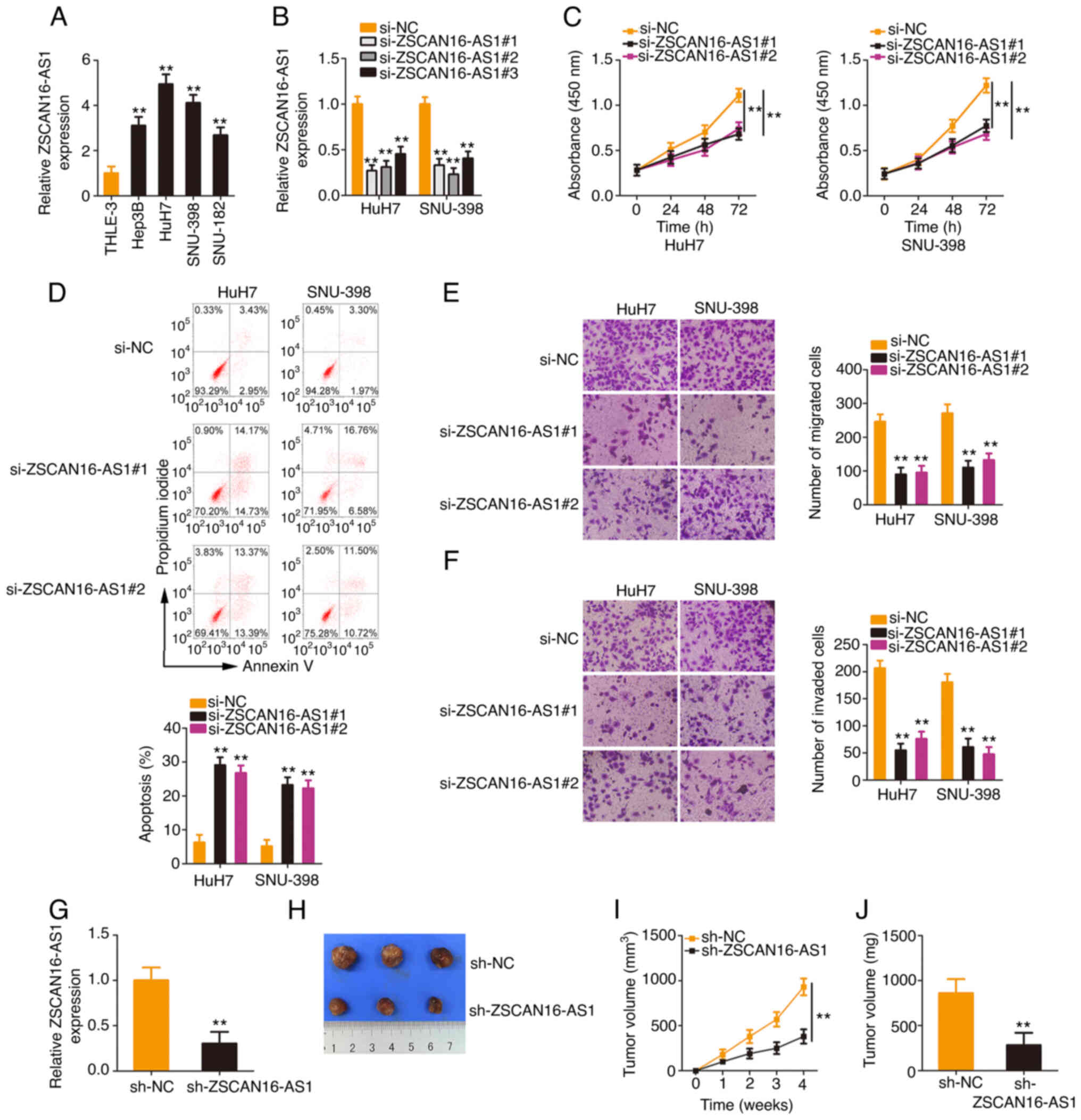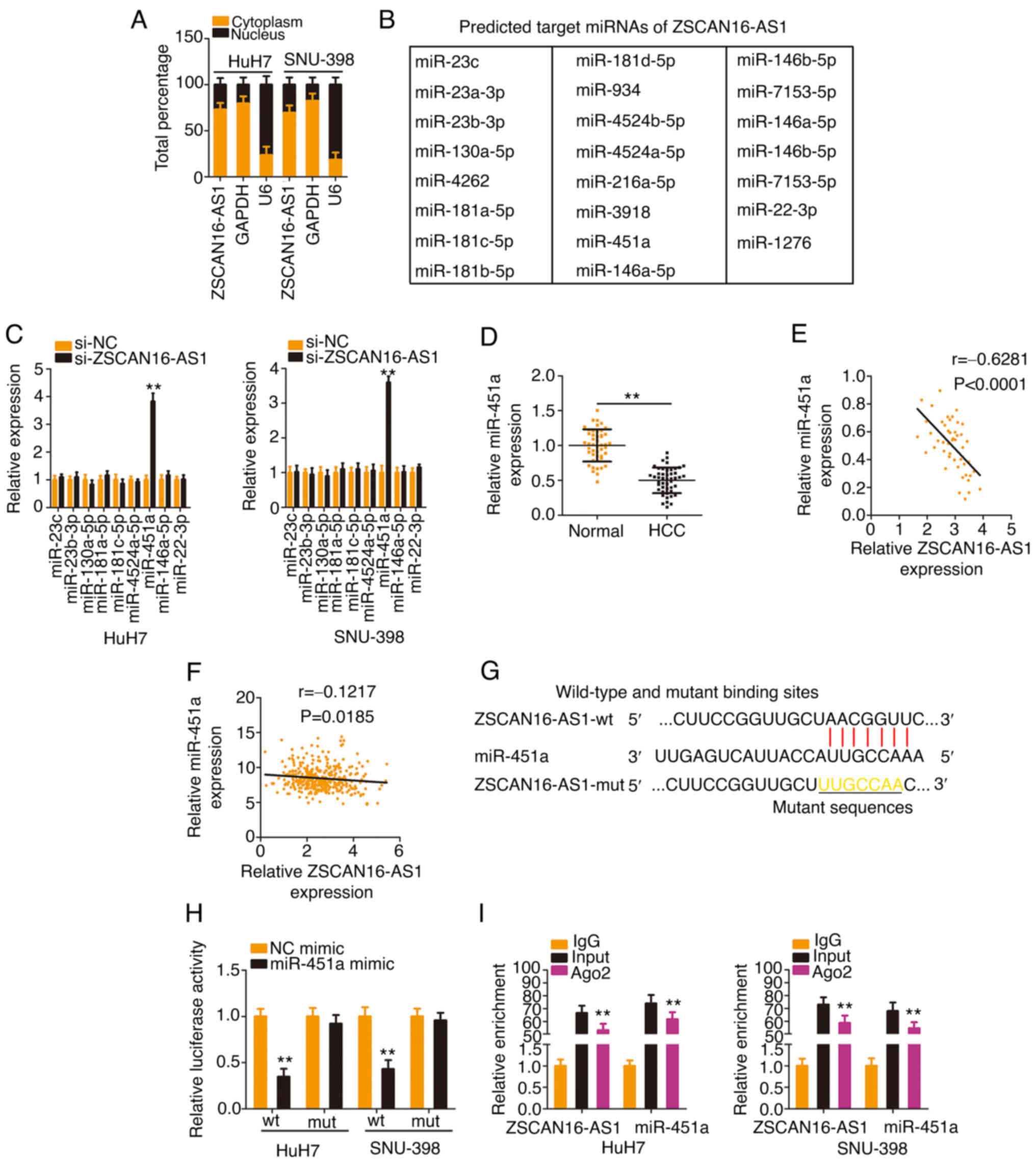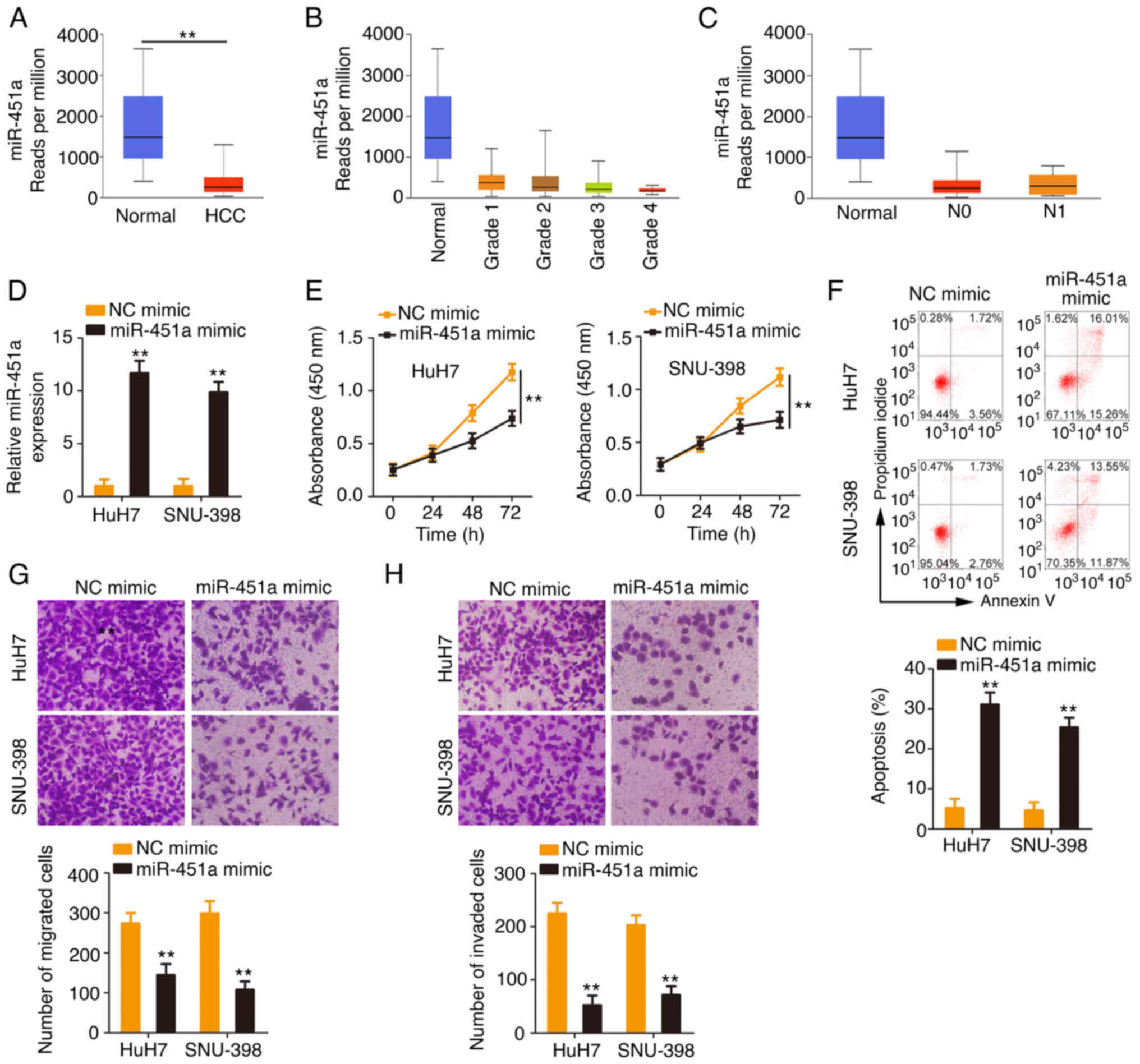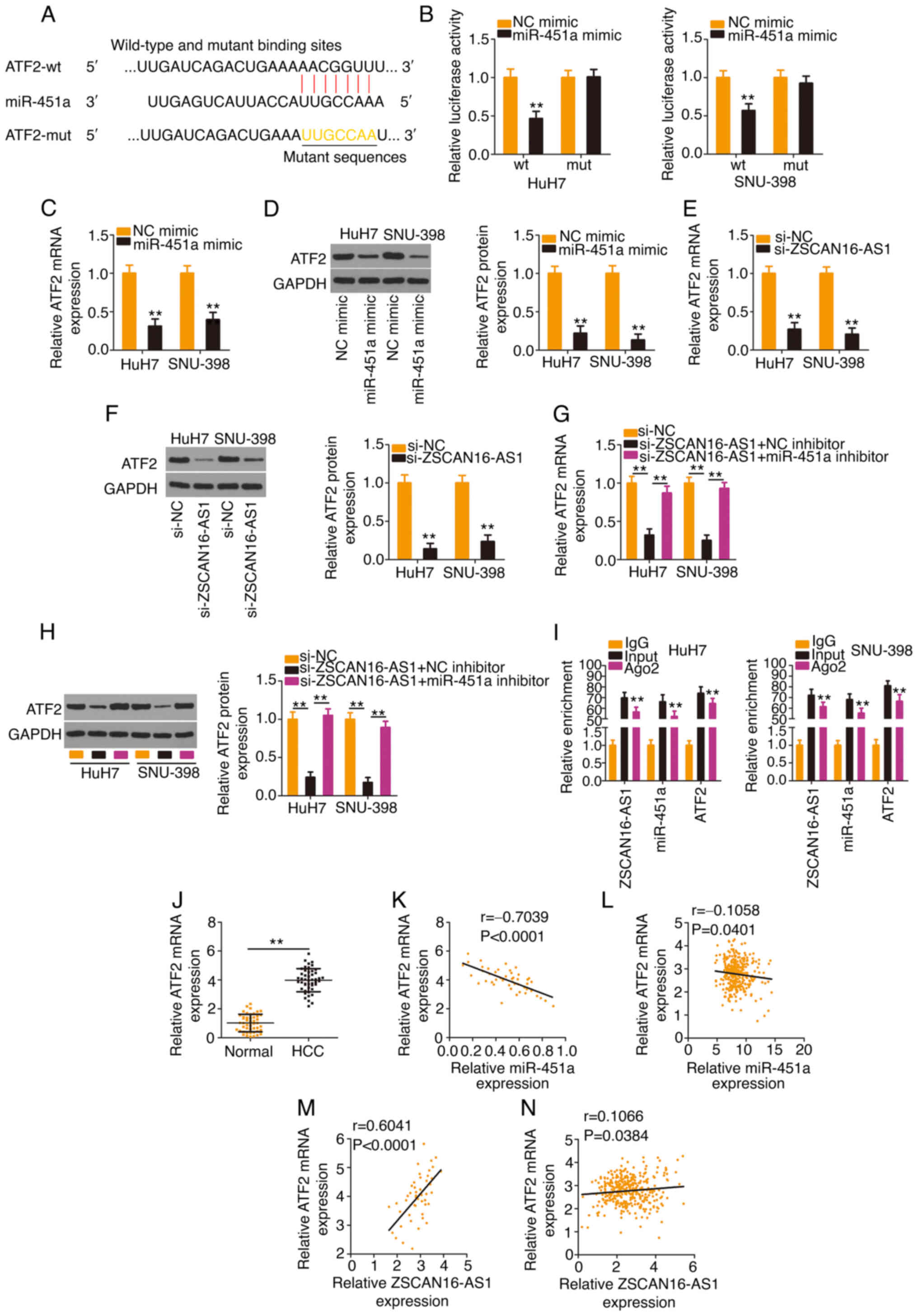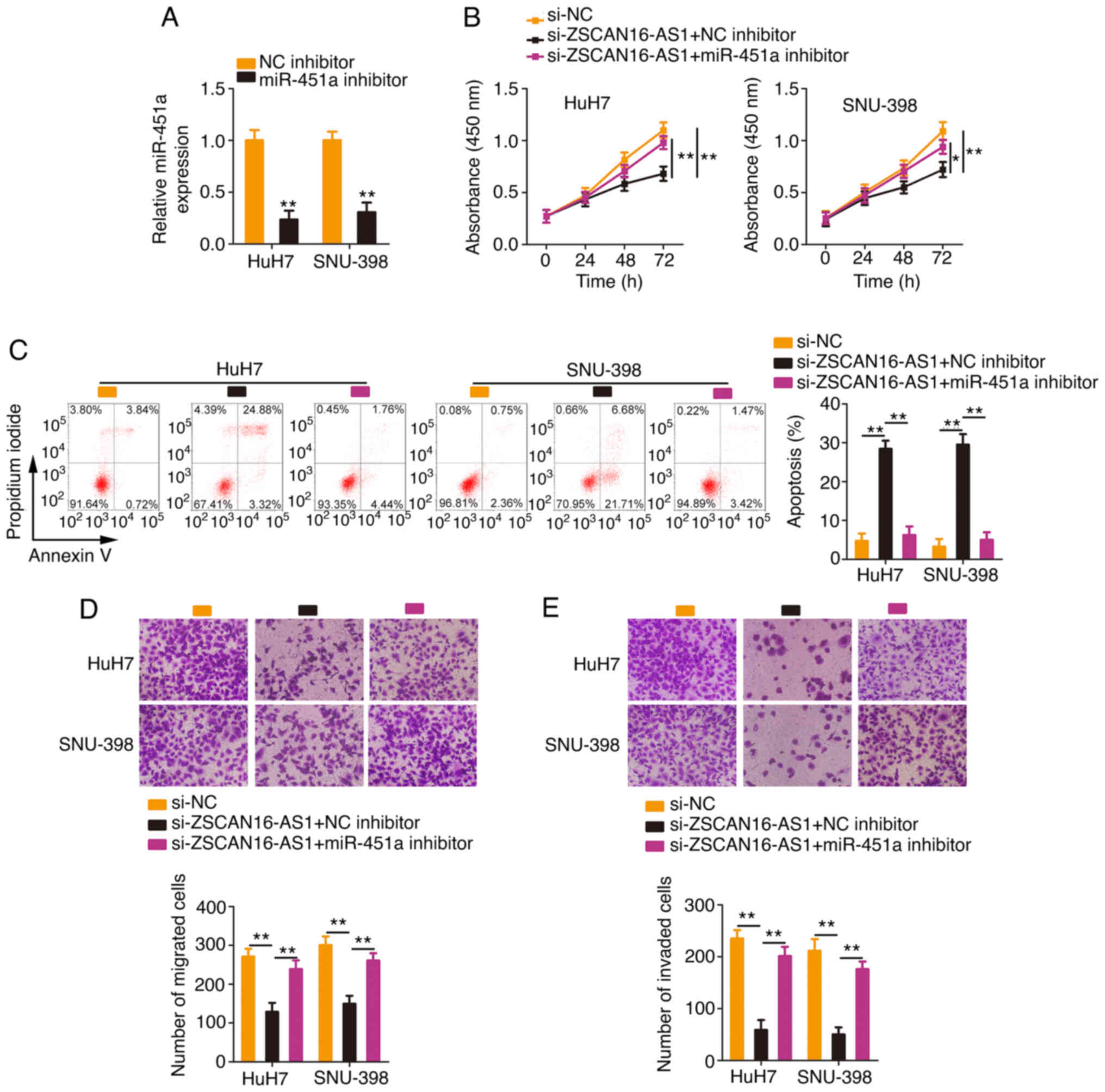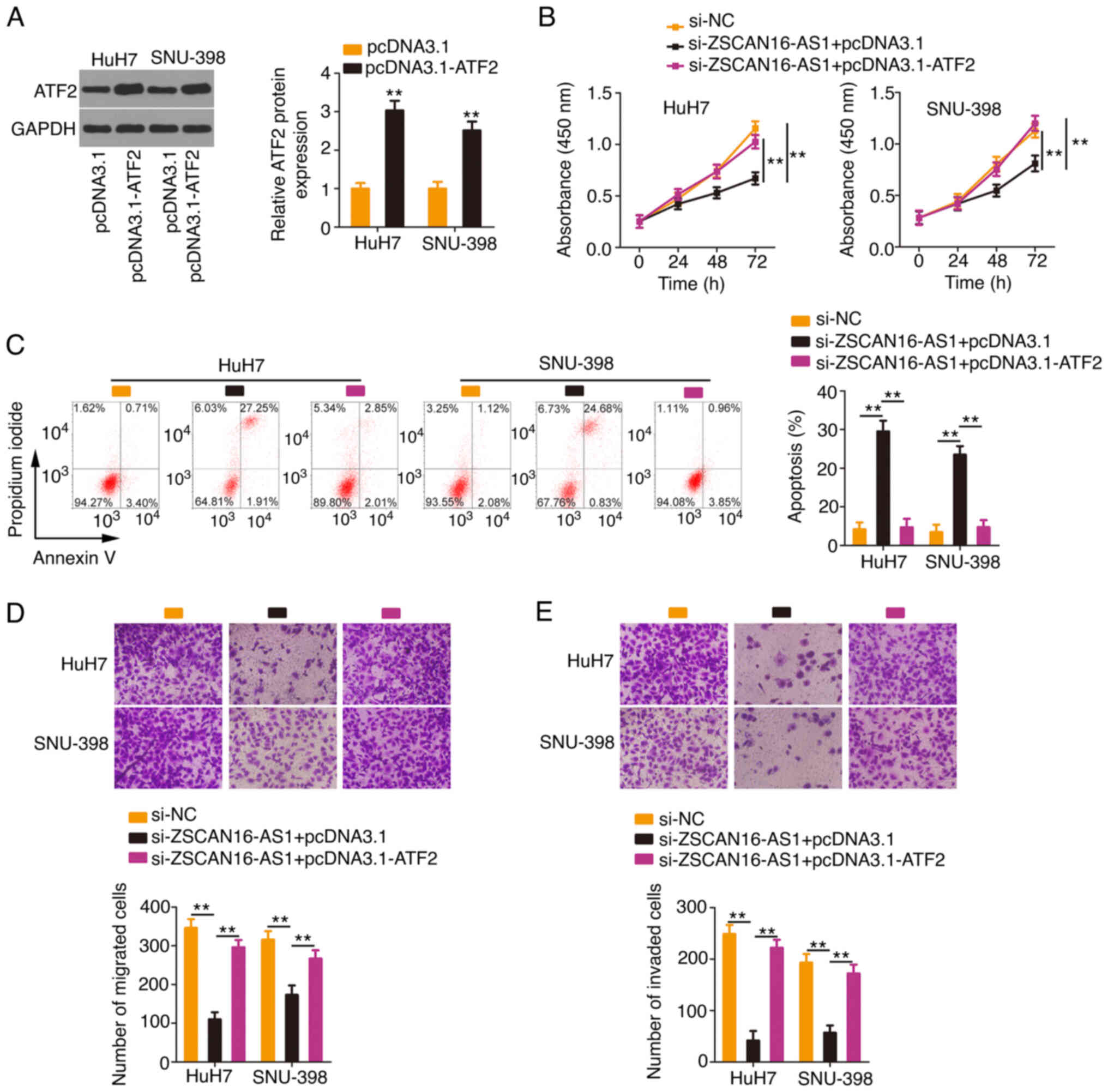|
1
|
Siegel RL, Miller KD and Jemal A: Cancer
statistics, 2020. CA Cancer J Clin. 70:7–30. 2020. View Article : Google Scholar : PubMed/NCBI
|
|
2
|
Helal Tel A, Radwan NA and Shaker M:
Extrahepatic metastases as initial manifestations of hepatocellular
carcinoma: An Egyptian experience. Diagn Pathol. 10:822015.
View Article : Google Scholar : PubMed/NCBI
|
|
3
|
Chen W, Zheng R, Baade PD, Zhang S, Zeng
H, Bray F, Jemal A, Yu XQ and He J: Cancer statistics in China,
2015. CA Cancer J Clin. 66:115–132. 2016. View Article : Google Scholar : PubMed/NCBI
|
|
4
|
Inchingolo R, Posa A, Mariappan M and
Spiliopoulos S: Locoregional treatments for hepatocellular
carcinoma: Current evidence and future directions. World J
Gastroenterol. 25:4614–4628. 2019. View Article : Google Scholar : PubMed/NCBI
|
|
5
|
Kulik L and El-Serag HB: Epidemiology and
management of hepatocellular carcinoma. Gastroenterology.
156:477–491.e1. 2019. View Article : Google Scholar : PubMed/NCBI
|
|
6
|
Gelli M, Sebagh M, Porcher R, Romanelli E,
Vibert E, Sa Cunha A, Castaing D, Rosmorduc O, Samuel D, Adam R and
Cherqui D: Liver resection for early hepatocellular carcinoma:
Preoperative predictors of non transplantable recurrence and
implications for treatment allocation. Ann Surg. 272:820–826. 2020.
View Article : Google Scholar : PubMed/NCBI
|
|
7
|
Djebali S, Davis CA, Merkel A, Dobin A,
Lassmann T, Mortazavi A, Tanzer A, Lagarde J, Lin W, Schlesinger F,
et al: Landscape of transcription in human cells. Nature.
489:101–108. 2012. View Article : Google Scholar : PubMed/NCBI
|
|
8
|
Karlsson O and Baccarelli AA:
Environmental health and long non-coding RNAs. Curr Environ Health
Rep. 3:178–187. 2016. View Article : Google Scholar : PubMed/NCBI
|
|
9
|
Peng WX, Koirala P and Mo YY:
LncRNA-mediated regulation of cell signaling in cancer. Oncogene.
36:5661–5667. 2017. View Article : Google Scholar : PubMed/NCBI
|
|
10
|
Bhan A, Soleimani M and Mandal SS: Long
noncoding RNA and cancer: A new paradigm. Cancer Res. 77:3965–3981.
2017. View Article : Google Scholar : PubMed/NCBI
|
|
11
|
Li J, Meng H, Bai Y and Wang K: Regulation
of lncRNA and its role in cancer metastasis. Oncol Res. 23:205–217.
2016. View Article : Google Scholar : PubMed/NCBI
|
|
12
|
Bolha L, Ravnik-Glavac M and Glavac D:
Long noncoding RNAs as biomarkers in cancer. Dis Markers.
2017:72439682017. View Article : Google Scholar : PubMed/NCBI
|
|
13
|
Botti G, Marra L, Malzone MG, Anniciello
A, Botti C, Franco R and Cantile M: LncRNA HOTAIR as prognostic
circulating marker and potential therapeutic target in patients
with tumor diseases. Curr Drug Targets. 18:27–34. 2017. View Article : Google Scholar : PubMed/NCBI
|
|
14
|
Heo MJ, Yun J and Kim SG: Role of
non-coding RNAs in liver disease progression to hepatocellular
carcinoma. Arch Pharm Res. 42:48–62. 2019. View Article : Google Scholar : PubMed/NCBI
|
|
15
|
Abbastabar M, Sarfi M, Golestani A and
Khalili E: lncRNA involvement in hepatocellular carcinoma
metastasis and prognosis. EXCLI J. 17:900–913. 2018.PubMed/NCBI
|
|
16
|
Chen X, Fan S and Song E: Noncoding RNAs:
New players in cancers. Adv Exp Med Biol. 927:1–47. 2016.
View Article : Google Scholar : PubMed/NCBI
|
|
17
|
Abba M, Mudduluru G and Allgayer H:
MicroRNAs in cancer: Small molecules, big chances. Anticancer
Agents Med Chem. 12:733–743. 2012. View Article : Google Scholar : PubMed/NCBI
|
|
18
|
Yang C, Wang Y, Xue W, Xie Y, Dong Q and
Zhu C: Competing endogenous RNA (ceRNA) network analysis of
autophagy-related genes in hepatocellular carcinoma. Pharmgenomics
Pers Med. 13:445–462. 2020.PubMed/NCBI
|
|
19
|
Niu ZS, Wang WH, Dong XN and Tian LM: Role
of long noncoding RNA-mediated competing endogenous RNA regulatory
network in hepatocellular carcinoma. World J Gastroenterol.
26:4240–4260. 2020. View Article : Google Scholar : PubMed/NCBI
|
|
20
|
Vaes E, Khan M and Mombaerts P:
Statistical analysis of differential gene expression relative to a
fold change threshold on NanoString data of mouse odorant receptor
genes. BMC bioinformatics. 15:392014. View Article : Google Scholar : PubMed/NCBI
|
|
21
|
Ballester M, Cordon R and Folch JM: DAG
expression: High-throughput gene expression analysis of real-time
PCR data using standard curves for relative quantification. PLoS
One. 8:e803852013. View Article : Google Scholar : PubMed/NCBI
|
|
22
|
van Iterson M, t Hoen PA, Pedotti P,
Hooiveld GJ, den Dunnen JT, van Ommen GJ, Boer JM and Menezes RX:
Relative power and sample size analysis on gene expression
profiling data. BMC Genom. 10:4392009. View Article : Google Scholar : PubMed/NCBI
|
|
23
|
Livak KJ and Schmittgen TD: Analysis of
relative gene expression data using real-time quantitative PCR and
the 2(-Delta Delta C(T)) method. Methods. 25:402–408. 2001.
View Article : Google Scholar : PubMed/NCBI
|
|
24
|
Peng L, Yuan XQ, Zhang CY, Peng JY, Zhang
YQ, Pan X and Li GC: The emergence of long non-coding RNAs in
hepatocellular carcinoma: An update. J Cancer. 9:2549–2558. 2018.
View Article : Google Scholar : PubMed/NCBI
|
|
25
|
Mai H, Zhou B, Liu L, Yang F, Conran C, Ji
Y, Hou J and Jiang D: Molecular pattern of lncRNAs in
hepatocellular carcinoma. J Exp Clin Cancer Res. 38:1982019.
View Article : Google Scholar : PubMed/NCBI
|
|
26
|
Lim LJ, Wong SYS, Huang F, Lim S, Chong
SS, Ooi LL, Kon OL and Lee CG: Roles and regulation of long
noncoding RNAs in hepatocellular carcinoma. Cancer Res.
79:5131–5139. 2019. View Article : Google Scholar : PubMed/NCBI
|
|
27
|
Wei L, Wang X, Lv L, Liu J, Xing H, Song
Y, Xie M, Lei T, Zhang N and Yang M: The emerging role of microRNAs
and long noncoding RNAs in drug resistance of hepatocellular
carcinoma. Mol Cancer. 18:1472019. View Article : Google Scholar : PubMed/NCBI
|
|
28
|
Song XZ, Xu XJ, Ren XN, Ruan XX, Wang YL
and Yao TT: LncRNA ANCR suppresses the progression of
hepatocellular carcinoma through the inhibition of Wnt/β-catenin
signaling pathway. OncoTargets Ther. 13:8907–8917. 2020. View Article : Google Scholar : PubMed/NCBI
|
|
29
|
Xu L, Wang Z, Yin C, Pan F, Shi T and Tian
Y: Long noncoding RNA LINC02580 suppresses the invasion-metastasis
cascade in hepatocellular carcinoma by targeting SRSF1. Biochem
Biophys Res Commun. 533:685–691. 2020. View Article : Google Scholar : PubMed/NCBI
|
|
30
|
Mo W, Dai Y, Chen J, Liang L, Xu S and Xu
X: Long Noncoding RNA (lncRNA) MT1JP Suppresses Hepatocellular
Carcinoma (HCC) in vitro. Cancer Manag Res. 12:7949–7960. 2020.
View Article : Google Scholar : PubMed/NCBI
|
|
31
|
Liu X and Shen Z: LncRNA TMPO-AS1
aggravates the development of hepatocellular carcinoma via
miR-429/GOT1 axis. Am J Med Sci. 360:711–720. 2020. View Article : Google Scholar : PubMed/NCBI
|
|
32
|
Zhang X, Xu S, Hu C, Fang K, Zhou J, Guo
Z, Zhu G and Li L: LncRNA ST8SIA6-AS1 promotes hepatocellular
carcinoma progression by regulating MAGEA3 and DCAF4L2 expression.
Biochem Biophys Res Commun. 533:1039–1047. 2020. View Article : Google Scholar : PubMed/NCBI
|
|
33
|
Zhang Z, Li H, Hu Y and Wang F: Long
non-coding RNA ADAMTS9-AS1 exacerbates cell proliferation,
migration, and invasion via triggering of the PI3K/AKT/mTOR pathway
in hepatocellular carcinoma cells. Am J Transl Res. 12:5696–5707.
2020.PubMed/NCBI
|
|
34
|
Zhang XZ, Liu H and Chen SR: Mechanisms of
long non-coding RNAs in cancers and their dynamic regulations.
Cancers (Basel). 12:12452020. View Article : Google Scholar : PubMed/NCBI
|
|
35
|
Zhang H and Lu B: The roles of
ceRNAs-mediated autophagy in cancer chemoresistance and metastasis.
Cancers (Basel). 12:29262020. View Article : Google Scholar : PubMed/NCBI
|
|
36
|
Wei GY, Hu M, Zhao L and Guo WS: miR-451a
suppresses cell proliferation, metastasis and EMT via targeting
YWHAZ in hepatocellular carcinoma. Eur Rev Med Pharmacol Sci.
23:5158–5167. 2019.PubMed/NCBI
|
|
37
|
Zhao S, Li J, Zhang G, Wang Q, Wu C, Zhang
Q, Wang H, Sun P, Xiang R and Yang S: Exosomal miR-451a functions
as a tumor suppressor in hepatocellular carcinoma by targeting
LPIN1. Cell Physiol Biochem. 53:19–35. 2019. View Article : Google Scholar : PubMed/NCBI
|
|
38
|
Huebner K, Procházka J, Monteiro AC,
Mahadevan V and Schneider-Stock R: The activating transcription
factor 2: An influencer of cancer progression. Mutagenesis.
34:375–389. 2019. View Article : Google Scholar : PubMed/NCBI
|
|
39
|
Watson G, Ronai ZA and Lau E: ATF2, a
paradigm of the multifaceted regulation of transcription factors in
biology and disease. Pharmacol Res. 119:347–357. 2017. View Article : Google Scholar : PubMed/NCBI
|
















